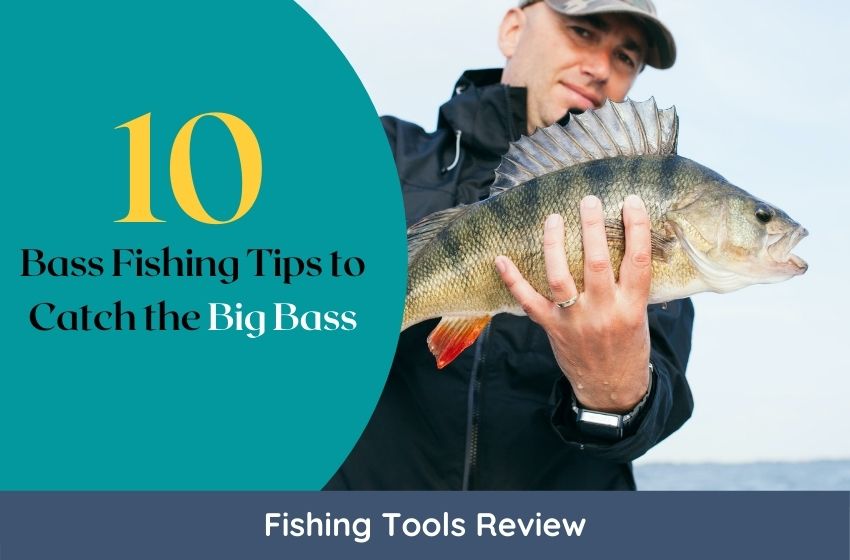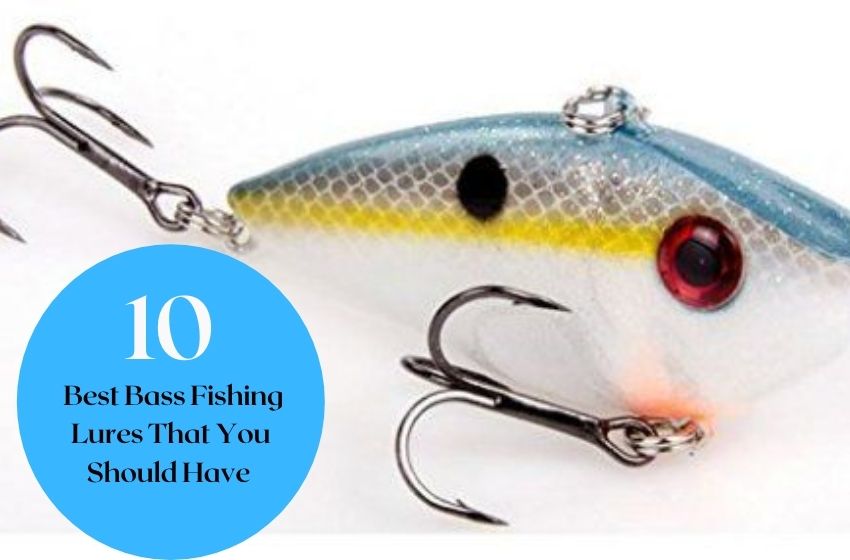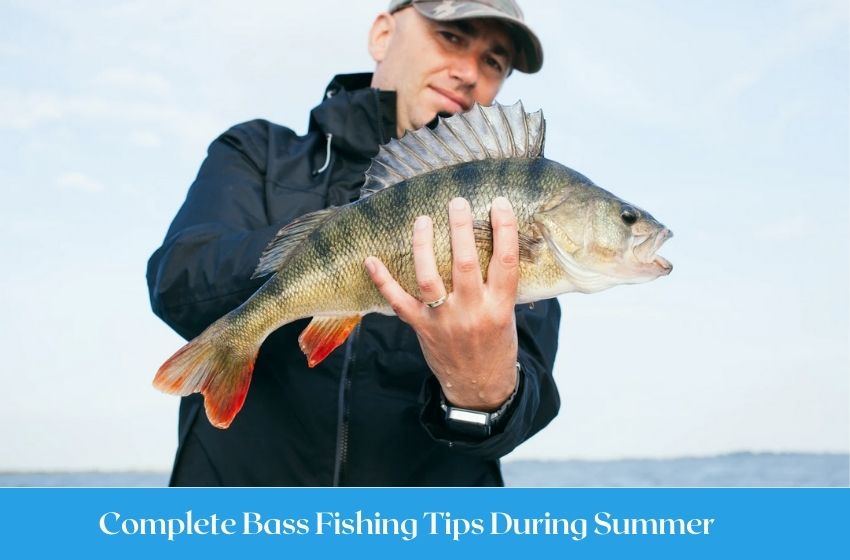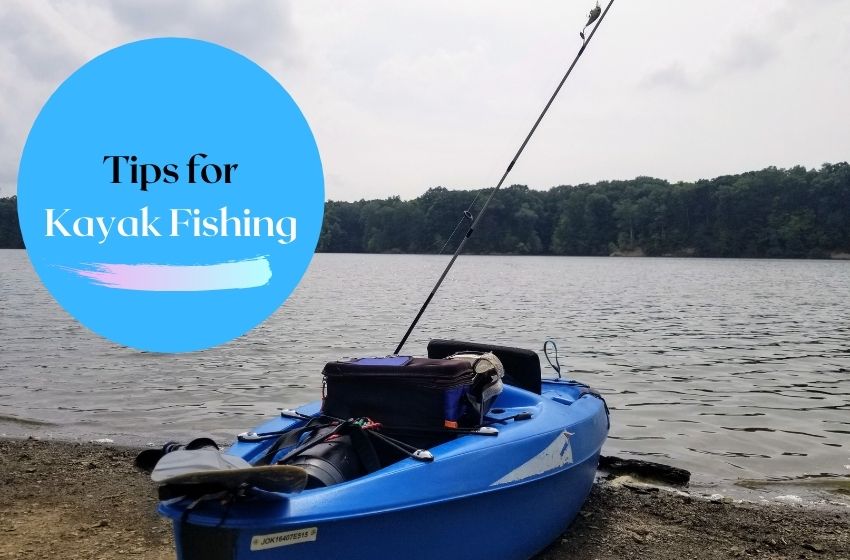
10 Bass Fishing Tips to Catch the Big Bass

The question that every fisherman continually asks himself is, How do I catch the best personal big bass? There are a few tips that can increase your chances of catching fish. We’ve compiled all of our bass fishing knowledge and put together this list of 10 bass fishing tips and tricks that we hope will make you a more successful angler.
-
- 1. Find the anomaly
If we had to keep only one tip regarding bass fishing, it would surely be to cast your lure where the fish are. For this, you must read the best body of water you are fishing. An anomaly can appear in different forms: rock, landscape rupture, faults, wrecks, seagrass borders, algae, currents, docks, and many more.
The Bar loves to hang out around these kinds of places to hide and ambush its prey. There are also times when bass roams in open water, but they can be much more difficult to locate than stationed fish.
-
- 2. Stick to reality
Bars eat everything. Indeed, the seabass has a very varied diet, ranging from forage fish such as sand lance, sardines, sprat, or smelt to prey such as crabs, shrimps, and other small cephalopods.
It is essential to stick to reality so that your lure mimics as well as possible the type of food that the sea bass feeds on locally. If, for example, sea bass feed on sand eels, cast an elongated soft lure.
-
- 3. Become a versatile fisherman
One of the worst faults for the bass fisherman is being “one-dimensional.” Let me explain: To prevent your bass fishing success from living and then to fail, you must become a versatile angler. The best way to become a balanced fisherman is to fish in new places, continually learning and practicing new fishing techniques.
Visit new fishing areas that are different from your usual fishing spots, and that will force you to adapt to the fishing conditions. If you are used to fishing in murky waters, then go soak your lures in clear water and try to master new fishing methods. Step out of your bass fishing comfort zone to become a versatile angler and, therefore, a better angler.
-
- 4. Check Temperature of the Water
The water temperature can vary widely. The water temperature greatly influences the activity levels and eating habits of Bars. It is better to cast slower baits in colder water and faster and aggressive in warmer waters. Also, note that when the water drops below 7 ° C, the sea bass no longer feeds at all.
-
- 5. Understand the weather
Weather conditions can have a significant effect on the behavior of bars. Getting to know the behavior of sea bass in changing weather conditions is vital to being an effective angler. On cloudy days, bars tend to be more active and foraging for food.
When the weather gives you bright sunshine, bars like to wait for food to come to them.
To catch that lazy bass on sunny days, opt for a shiny bait like a jig or a glittery soft lure. Remember that above all, the bass is an opportunist in search of easy prey.
The onset of depression is also an interesting time. It is often accompanied by a drop in atmospheric pressure, and the fish feel it. A gale or a storm announces for them greater difficulty in feeding. They, therefore, anticipate making reservations.
-
- 6. Become a knot pro
Tying knots in the water can be difficult, but losing a fish to a bad knot is even harder to live with… To save precious time fishing and hook more fish, choose your favorite multipurpose knot and train. Your hours and hours until it becomes automatic.The 3 attachment nodes to connect lures and staples: The spoon, Kreh, and Palomar nodes. If you are really good, you should know how to tie these knots with your eyes closed.
-
- 7. The wind can be your friend
On days when the wind blows at more than 30km / h, fishing can become difficult and disappointing. Even if it is difficult to throw off the edge or maintain the position of the boat, don’t give up just yet (unless you’re in danger, of course).
So the next time you’re out on the water, and the wind is blowing, don’t give up just yet!
-
- 8. Search
We are fishing at a time when technology can become a fisherman’s best friend. Take advantage of services like Google Maps to better understand the places where you are going to fish. Identify the hotspot areas of a body of water that might contain fish and begin to strategize for a day of fishing before you even see the body of water.
When looking at sea or satellite charts, try to identify points, rocks, oyster-farming areas, and other typical places where the seabass likes to hang out.
-
- 9. Be persistent
Don’t abandon an area too quickly. Sometimes the disappointment is palpable, and you start to think to yourself that it would be better to fish well in an area you know than to cruise the seas.
-
- 10. Get Your Net Ready
So take your favorite technique or lure and explore all the areas where a bass might be hiding. Often times, you will be rewarded. Be ready with your net. The net should be strong and user friendly.
Recommended For You
Fishing tips are tricky but if we use them in the right way we can achieve our goals. Summertime is ideal for bass fishing. However, no one would even like to eat a pizza or hot prepared dishes when the […]
Why is kayak fishing so important? It is an exciting, cheap, healthy and straightforward sport where the rhythm is set, and big fish are caught. Kayak fishing is considered a frontier sport, as it is in its early stages of […]
The Crappie can be fished year-round, providing every angler with limitless opportunities to catch this beautiful fish. The fish can be found in freshwater bodies, including ponds, lakes, rivers, and reservoirs. Since these fish like to go to schools, do […]
Improve your talent in the water with a pair of best fishing boots and waders suitable for this season. Use these tips to determine the best wading style, material, and height for your angle profile. Whether its shallow streams or […]
Recent post

Best Bass Lures: The Top Lures for Bass in 2021

Complete Bass Fishing Tips During Summer
Top Reviews

9 Best Fishing Hooks buy for 2023 Reviews and Guide

Best Bass Lures: The Top Lures for Bass in 2021

Complete Bass Fishing Tips During Summer



